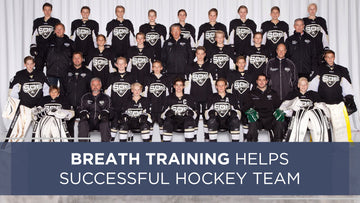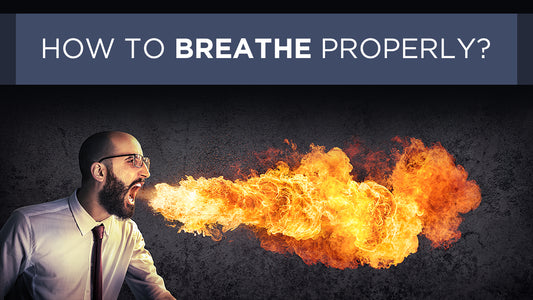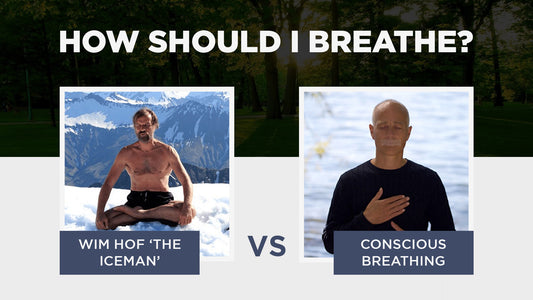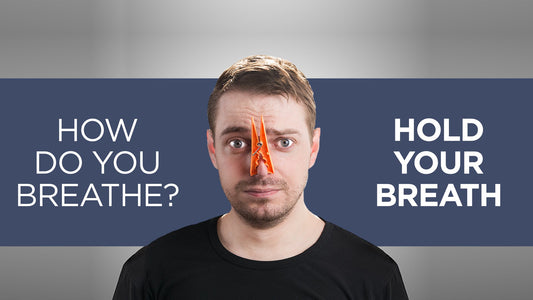
Conscious Breathing during training increase performance
My name is Gabriella and I am a third year student at the Olympia high school in Helsingborg, Sweden. In the third year, all students conduct a project, and my project was to find out how physical activity affects breathing. My work has partly been based on literature studies, partly on practical work. The practical work consisted of me trying out Conscious Breathing for just over half a year, with approximately 6 hours of training per week. My focus on breathing has made it possible for me to sense what is happening in my body during exercise. My project has resulted in a written account – “Interaction between breathing and physical activity“, part of which is presented in the article below.
First step – nose breathing
My first step towards conscious breathing was to close my mouth and strive towards breathing through the nose only, which for the first few months proved difficult during high intensity training. Conscious breathing during high intensity training left me with a feeling of not being able to catch my breath. At low intensity exercise, however, I had no trouble breathing through the nose.In Anders Olsson’s book Conscious Breathing, I read that it should be possible to breathe through the nose regardless of how intensely one is training. Therefore, I continued to practice nose breathing and today, even during high intensity training, I can breathe through the nose. I think my lungs function more efficiently because I’ve strengthened my diaphragm musculature.A strong diaphragm enables one to take deep breaths. As the air flows in through the nose it streamlines, allowing for a direct transport of air to the lower parts of the lungs and thus allowing for the maximum usage of the lungs.
Comparison of mouth breathing to nose breathing
My experience with mouth breathing has been negative to a large extent. I’ve still been practicing mouth breathing every now and then to compare it with nose breathing. Mouth breathing has led to the breathing taking place high up in the chest. This in turn understimulates the diaphragm muscle, leading the body to automatically use muscles in the neck, shoulders and upper part of the chest for breathing instead.Over-activity of these respiratory muscles leads to muscle tension and poor posture. Another negative side effect of mouth breathing is that the mucous membranes of the mouth cavity and the throat quickly become dry due to direct contact with the air. Therefore, when mouth breathing, I have swallowed more often and increased my intake of fluids to avoid dry mucous membranes.
Diaphragmatic breathing

In addition to nose breathing, I have also learned to take deep (not big), relaxed, rhythmic and quiet breaths using the diaphragm. To achieve this kind of abdominal breathing one has to constantly remind one’s self. Awareness is the key to a good breathing and I myself am constantly working on awareness. To achieve abdominal breathing, I have sought to empty and fill the lungs maximally, which is especially challenging during training. It feels like the diaphragm is fighting abdominal breathing, due to the contraction of the diaphragm during both inhalation and exhalation. Normally, when the body is at rest, the diaphragm only contracts during inhalation. Actively striving to achieve abdominal breathing may be sufficient to deepen the breathing.
Relaxed breathing
Abdominal breaths can make breathing labored, hence it is important to find a breathing pattern that feels as natural and relaxed as possible. When I find a balance between abdominal and relaxed breathing, I experience a flow in my breathing. This breathing is also automatically quiet. A balanced breathing has had a calming effect on me. My heart rate monitor has shown a relatively low pulse at these times. Heart rate and respiration rhythm are interrelated: a relaxed breathing also gives a relaxed heart (D. Alexopoulos et al, 1996).
Rhythmical breathing three-six
All the breathing techniques I tried are based on a prolonged exhalation. When I have maximized my exhalation, I have on occasions had headaches, which are likely due to an increased blood supply to the brain. Thus even in terms of breathing rhythm, balance is required. The long exhalations lead to increased carbon dioxide levels in the blood, which lowers the pH and in turn causes increased oxygenation. After having tried several different breathing rhythms, I settled with one that I call three-six because it involves three seconds of inhalation followed by six seconds of exhalation and a natural break. This rhythm suits low-intensity exercise. An easier way of controlling the rythm is by counting steps instead of seconds
Enhanced performance, more fun to train
The Conscious Breathing method has helped me get more out of my training, especially performance-wise, because relaxed breathing relaxes the body, which in turn enhances performance. (L. Janson, 1998). I now can run longer distances, and at times I run faster than I did before.As my breathing technique developed, my way of training changed. Now I often train for long hours of low intensity, which is the most natural and comfortable training for the body. It has also been shown that compared with high-intensity exercise, low-intensity exercise—such as slow running—is connected to longer life span (P. Schnohr et al, 2012). Low intensity exercise also provides greater opportunities to breathe consciously and to pay attention to what happens in the body.I have learned to listen to my body and I train to feel good. As I gradually developed my breathing technique I also began to appreciate training more. I think the motivation has to come from the heart and the stomach. When training is associated with positive experiences, I want to train more frequently. After a session I always ask myself what the session felt like. In my opinion, feeling is the most important thing in training. I constantly strive to be aware of my breathing, both during training and in everyday life. When I focus on my breathing, I can appreciate interval training as well as walking.Good luck with improving your breathing during training!/Gabriella, 19, student, Helsingborg, Sweden






